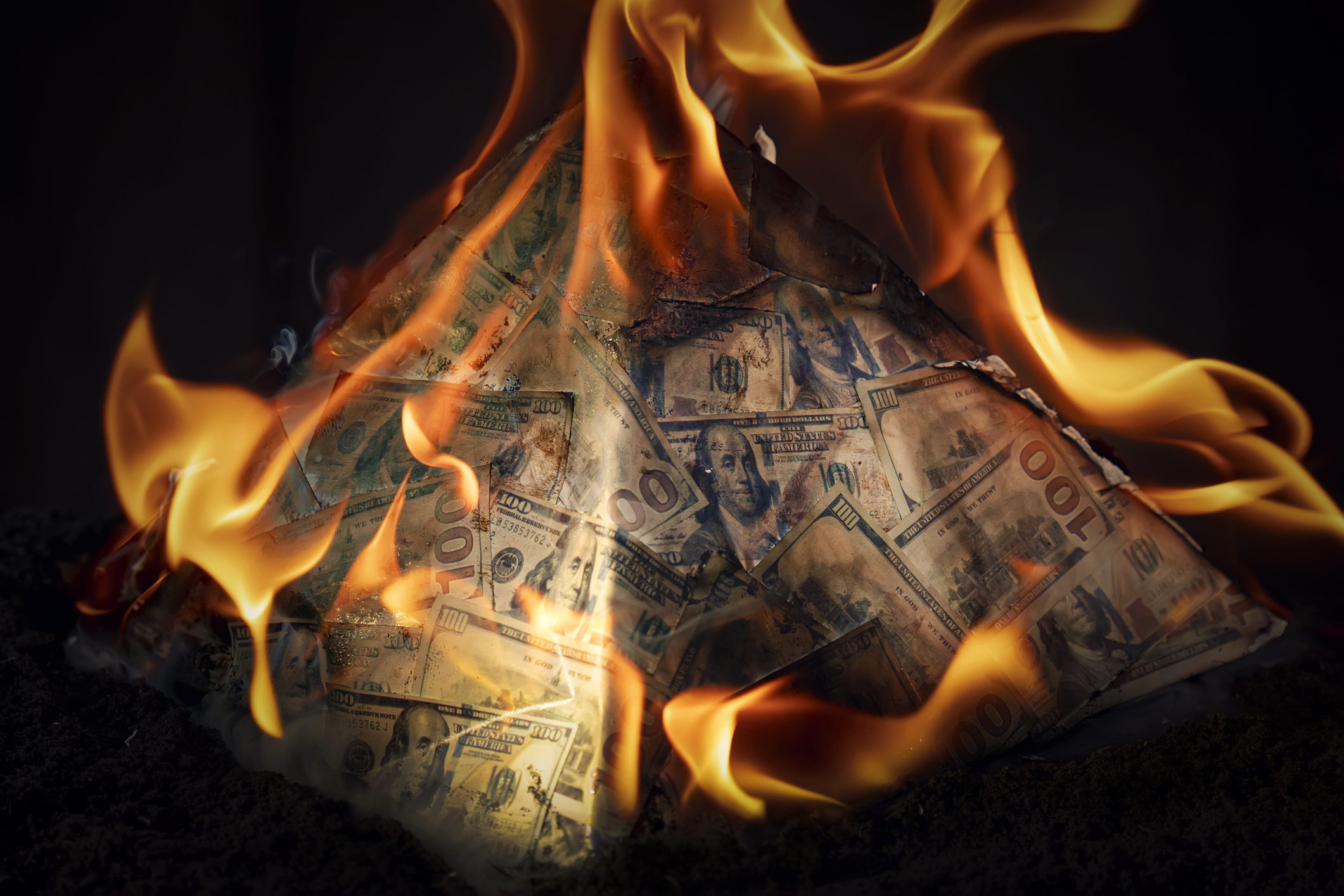Austerity for ordinary citizens and bank rescues for the affluent is a toxic mix
Not even ChatGPT could dream this up: Fifteen years after the whole world financial system collapsed and barely a decade since we were told the Dodd-Frank financial reform bill fixed the problems in the US system, two major regional banks in the U.S. are down and depositors are fleeing from many, many more.
Warren Buffett and execs of some of the Too Big to Fail banks, where the fugitive deposits are seeking sanctuary, are exploring schemes for private sector rescues of the embattled First Republic Bank and some of the other small fry. Meanwhile, the Treasury and Federal Reserve have pulled together a new emergency loan facility for banks backed by – what else? – the Treasury’s Exchange Stabilization Fund. The Fed has also widened access to its usual channel for tiding banks over bad patches, its “discount window.” Both portals advance real money to banks on the strength of securities they own that have in many cases fallen steeply in value. But the Fed assesses these fallen angels at those old values, “at par.”
In the Old World, fear – and depositors – are also running rife. Less than a fortnight ago, Switzerland, the citadel of the mythically prudent gnomes of Zurich, sported two megabanks. Now, shockingly, it is down to one. The giant Credit Suisse bank is no more, forcibly merged by Swiss authorities into the country’s one remaining banking colossus, UBS. The shotgun rescue spooked both financial markets and leading Swiss political parties. International investors are enraged by the reversal of what they thought was the traditional rule in bank rescues that all stockholders would be wiped out ahead of bondholders and the promulgation of the merger by diktat, without any shareholder vote. The Swiss parties also criticized the array of inducements that the state promised to UBS to close the deal and are cringing over the terrifying possibility that the new supergiant might be Too Big To Bail.
The Swiss switch on the bonds unsettled investors everywhere, even in Asia, though Eurozone regulators immediately repudiated any idea that they would ever emulate the Swiss. The Swiss finance minister responded by admonishing the political parties not to meddle retroactively in the deal, adding that she was convinced that current rules for resolving systemically important banks were unworkable. As this melodrama played out, runs began on another continental giant, the famous Deutsche Bank. Soon even German Chancellor Olaf Scholz emerged to pronounce the bank healthy.
It will be interesting to see how many investors he convinces and for how long, though wagers against finance ministries and central banks bent on shoring up particular institutions are usually a fool’s bet.
But a very deep problem lies at the root of this new wave of unease. It goes well beyond anything in the litany of excuses now being trotted out to account for the sudden appearance of all these bolts from the blue – a factor that quite transcends problems of any individual bank, tech, or any other industry, and even the glaring failures of supervision by regulators at any one central bank.
Put simply, major world governments and central banks are bent on having it both ways. They are emerging from a long period of quantitative easing and very low-interest rates at the same time they are steeling themselves to wage war on inflation by rapidly raising interest rates. As a consequence, assets typically considered ultra-safe like longer-duration government bonds have plunged in value, since most pay only very modest interest rates. Banks that can afford to hold these bonds to maturity have no problem. They will get their principal back. But if they run into trouble and need to sell some to raise money to meet withdrawals, they have to peddle the paper at market rates, which brings in a lot less cash.
At that point, a doom loop kicks in. As word gets around that a bank is facing trouble, depositors, especially big depositors, start pulling their funds. Which leads to more distress sales, more deposit withdrawals, additional trouble raising funds, etc. Meantime ricocheting deposits spread panic. In the limit, as we all found out when Lehman was allowed to fail in 2008, the entire financial system can go down like a house of cards, putting the economy in free fall.
A solution to this structural weakness is straightforward: guarantee the deposits, which is what the Fed and the Treasury did for SVB and Signature Bank and the Swiss authorities accomplished. Nobody runs if they know their money is safe.
But this step always inspires fierce resistance even as it prevents economic collapse. Not just free-market theorists, but every reasonable economist quite rightly might want to know why anyone would ever run a bank prudently if they can make more money by being reckless and getting bailed out by the public if things go south.
And millions of ordinary citizens simply hate bailouts. They view them, for very good reasons, as insurance for the rich and powerful provided at their expense. The implication is obvious: governments that are phasing out temporary programs that helped citizens through the pandemic, cushioned inflation’s impact, or tied up in knots about releasing student debtors from a portion of their obligations can be sure they will influence people, but not win friends by bailing out banks.
It does not help that actual bailouts hardly ever penalize the failing bankers very much and virtually never include criminal charges for anyone. Nor that most bailouts rarely secure any of the upside for the public, though designing mechanisms to do that is not that difficult.
It is clear that the Fed and the Biden administration have learned from the Santa Claus visits of Hank Paulson, Ben Bernanke, and Tim Geithner back in 2008. This time the authorities insisted on the complete wipeout of the shareholders of SVP and Signature. But just as in many cases back then, the latest bank rescues allowed bonus payouts to the very management that had run SVB into the ground, as the news trickled out that insiders had been borrowing heavily from the bank and unloading shares as the institution swirled down the drain. The Credit Suisse management, too, tried to pay out bonuses as part of the rescue until the Swiss Finance Minister belatedly moved to put on some limits.
This brings us to the fundamental source of current financial instability. Once depositors start running, governments cannot waver over whether to guarantee the banking system. In the famous phrase of Mario Draghi, when he ended the Euro crisis in one afternoon, they have to make it clear that they are prepared to do “whatever it takes.”
But intense political opposition makes this difficult. Though the Republican Chair of the House Committee on Financial Services and many Republican Senators have been very reserved, extreme free marketeers in the House Freedom Caucus and some Senators have been vocally critical of the handling of the bank rescues, as have a substantial number of major donors to the party.
The Biden administration has tiptoed around the “bailout” issue by denying that it actually bailed anyone out. It also sometimes equivocates about what it will do in the event more banks knock over. That so far has produced a market swoon leading to a “clarification.” But looming just ahead is the burning issue of the federal debt ceiling, which threatens to completely paralyze the system.
The political reaction in Switzerland is almost equally fierce, leading some to speculate that the affluent banking center’s politics might finally polarize like those of so many other lands. In other major European countries, one hardly needs to guess what will happen if the big banks have to be rescued again. French politics is already melting down over the titanic battle to change the social security system. In much of the rest of Europe, including Germany and the U.K., millions of ordinary citizens are up in arms about inflation, going on strike, and protesting.
In the background loom two other ominous facts. Firstly, so far we have heard mostly about banks and depressed values of government bonds. But when interest rates rise, there is a great deal more to fear in bank portfolios than just fear itself, despite claims of major advances in transparency since 2008.
Plenty of other assets held by banks also fall in value. Depending on how high rates go, they could fall much more. Mortgages are a potential problem, as are car loans and, in the medium run, commercial real estate, which many smaller U.S. banks hold.
No less importantly, banks’ exposures to derivatives remain opaque. A loophole that afforded US banks with foreign subsidiaries a way around Dodd-Frank’s reporting requirements highlighted by a fine paper by Michael Greenberger for INET in 2018 is still not closed.
Most troubling of all, though, is the fact that the focus thus far has been almost entirely on banks. But a lot of financial institutions (quite legitimately) hold large portfolios of bonds and other instruments subject to risks from the rapid rise in interest rates. These include hedge funds, private equity firms, insurance companies, and the rest of vast world of “shadow banking” entities that are not legally banks but engage deeply in the business of finance. In 1998, the Long Term Capital Management disaster brought the U.S. system to the edge of disaster. Barely two years ago, Credit Suisse and several other institutions lost billions making bad loans to a large hedge fund. And only days ago, the U.S. Securities and Exchange Commission raised questions about another hedge fund. We are only likely to find out who will have to pay out on derivatives or has overextended themselves after the fact. The same holds for collateral calls, which can stress firms especially when trading volatility runs high.
The bottom line is this: As the latest round of interest rate hikes by the central banks of the U.S., the U.K, and the Eurozone in the face of the latest instability testifies, governments and central banks are thus far determined to squeeze inflation out of the system by raising rates on ordinary people and businesses. Under increasing pressure from the rising cost of their own borrowing, governments are also looking for ways to trim budget expenditures. But austerity for ordinary citizens and bank rescues for the affluent is a toxic mix. It can easily summon social movements that stalemate the system.
This caution comes with an important kicker. Though many historical works gloss over the key points, or even mangle basic facts, the great cases in which large countries finally succumbed to disastrous bank runs share a common denominator. Yes, opposition to bailouts typically comes from both the right and the left, but the effective force that finally wrecks the system comes always from a lunge from the right. I lack the space to sort through the often highly disputed facts of each individual case, but this rule holds for the 1931 German banking collapse, the fatal transition from President Herbert Hoover to Franklin D. Roosevelt that led to the shutdown of the entire American banking system; and disastrous decision to let Lehman go in 2008, which occurred only days after the free market jamboree of the Republican Convention smothered any remaining appetite in the Bush administration for more costly rescues.[1]
The risk in the current political climate that stronger right-wing forces could emerge out of one-sided efforts to rescue banks as the government leaves most citizens to fend for themselves is real. Somewhere down the line, it could easily paralyze any of several political systems. The Eurozone is particularly problematic since big bank rescues will inevitably involve a whole set of finance ministers from different countries operating in an institutional framework that is still a work in progress.
Endnote
[1] For the 1931 German case, see Thomas Ferguson and Peter Temin, “Made in Germany: The German Currency Crisis of 1931,” in Research in Economic History, Vol. 21, Alexander J. Field, ed. (Amsterdam: JAI, An Imprint of Elsevier Science, 2003), pp. 1-53; Ferguson and Temin, “Comment on ‘The German Twin Crisis of 1931,” Journal of Economic History, Vol. 64, No. 3 (Sept. 2004), pp. 872-76. In the opening days of the Obama administration, a wave of literature tried to pin responsibility for the collapse of the American banking system in 1933 on Roosevelt. This was far from the truth. At the time, I drew on archival research for an earlier essay of mine to depict what happened. (“From ‘Normalcy’ to New Deal: Industrial Structure, Party Competition, and American Public Policy in the Great Depression,” International Organization 41 [Winter 1984]). That blog post is now inaccessible, but Paul Krugman’s discussion of it in his New York Times blog is easily found.
The “‘Normalcy’ to New Deal” paper also drew on other archival records of phone calls and other communications between Hoover and Thomas Lamont of J.P. Morgan & Co., to show how Hoover concealed the role of bankers in formulating his famous proposal for a moratorium on international debt payments in the 1931 German crisis (p. 79). But American historians continue to repeat Hoover’s claim that bankers had nothing to do with it.
For 2008 and Republican Politics, see Thomas Ferguson and Robert Johnson, “Too Big To Bail: The ‘Paulson Put, Presidential Politics, and the Global Financial Meltdown Part II: Fatal Reversal – Single Payer and Back,” International Journal of Political Economy, Vol. 38, No. 2 (Summer 2009), pp. 20ff.
After this “Postscript” appeared, a reader pointed to an archived link to the 2010 post on Hoover and Roosevelt that can be accessed here.
Thomas Ferguson is INET’s Director of Research, Emeritus Professor at the University of Massachusetts, Boston; and Senior Fellow at Better Markets. For comments on drafts, he is grateful to Michael Greenberger, Servaas Storm, and Walker Todd. The views expressed here are his own and not those of any institution with which he is affiliated.








